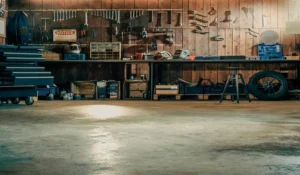Reality television is always changing to keep audiences hooked. While earlier formats were often centered around drama, romance, or social conflict, today’s audiences are tuning in to something far more constructive…literally. From glassblowing to woodworking and from blacksmithing to sewing, a new wave of ‘maker shows’ has captivated viewers by showcasing craftsmanship, creativity and good old-fashioned hard work.
Shows like ‘Forged in Fire’, ‘The Great British Sewing Bee’ and ‘Blown Away’ are not just entertaining; they’re inspiring a movement. Viewers are no longer just passive fans—they’re picking up tools, ordering materials and turning their garages into workshops. This cultural shift has made craftsmanship aspirational again and is blurring the lines between entertainment and education in a fascinating way.
Craftsmanship in the Spotlight
The success of maker shows is due in part to their ability to highlight the nuance, difficulty and artistry behind tasks many people have taken for granted. Watching a blacksmith transform a block of metal into a fully functional blade or seeing a contestant on Making It create a whimsical sculpture from scratch, invites a deep appreciation for the skills involved.
In a world increasingly dominated by digital experiences, the tactile satisfaction of watching someone build something with their hands feels refreshing. These programs offer a break from screen-saturated lives and remind audiences of the value of physical labor, patience, and attention to detail.
Learning by Watching
While not marketed as educational programming, many of these shows end up teaching their audiences in subtle ways. Viewers pick up terminology, techniques, and safety tips simply by watching skilled artisans at work. In some cases, these shows have sparked a boom in hobbyist communities.
Take, for example, the rise in home blacksmithing inspired by Forged in Fire. Online forums and YouTube channels are now flooded with beginners eager to replicate what they’ve seen on TV. Many of these newcomers are actively seeking out tools and raw materials for their projects and this is where technology meets tradition.
From Screen to Workshop
The transition from television viewer to hobbyist has never been easier. The internet now makes it simple for would-be makers to find the supplies they need, including specialty items that might once have been limited to industrial buyers. For example, aspiring metalworkers can buy steel online in small quantities suitable for personal projects—something that would have been nearly impossible a decade ago without a business license or industry connections.
Likewise, platforms like Etsy and Instagram have created spaces where these makers can not only showcase their work but even monetize their skills. This blending of creativity, self-expression, and entrepreneurship has made the maker movement one of the most vibrant cultural trends of recent years.

The Emotional Pull of Making
There’s another reason why maker shows are hitting a nerve: they offer a rare sense of closure and accomplishment. In each episode, audiences witness a complete journey, from raw material to finished product. In a world where many jobs are abstract and results are delayed or invisible, the satisfaction of building something tangible is deeply appealing.
The shows also reinforce values like persistence, innovation and resilience. Watching contestants bounce back from mistakes, improvise solutions, or improve under pressure is inspiring as well as entertaining. These human elements are at the heart of why audiences keep coming back.
The Maker Movement Goes Mainstream
What was once a niche interest has now spilt over into mainstream culture. Schools are integrating more practical arts into their curricula. Community workshops and maker spaces are popping up in cities around the globe. Even companies are taking note, incorporating maker-style activities into team-building programs and customer experiences.
Maker culture also intersects with sustainability. People are increasingly interested in reusing, repairing and upcycling materials rather than relying on mass-produced goods. This environmental awareness is giving new life to traditional skills like woodworking, metalworking and sewing. Which are skills many feared were fading into obscurity.
From Passion to Profession
For some, a casual interest in crafting becomes a full-fledged business. Reality TV can plant the seed, but with online learning platforms, social media communities, and e-commerce tools at their fingertips, makers can turn passion into profit. Whether it’s handmade furniture, artisanal knives, or custom clothing, there’s a growing market for authentic, well-crafted goods.
Many of these creators begin with small steps: Watching a show, trying a new technique and sourcing materials one order at a time. Having access to reliable suppliers is crucial in this journey. Whether it’s tools, fabrics, or metals, the ability to quickly buy online or source niche equipment can mean the difference between a stalled project and a finished masterpiece.
Conclusion
The rise of maker shows in reality television reflects a deeper cultural shift toward valuing creativity, skill and craftsmanship. As more viewers find themselves inspired to try their hand at building, fixing and designing, the line between entertainment and education continues to blur. And thanks to the accessibility of materials and community resources, the leap from audience member to artisan has never been more achievable.
So next time you’re binge-watching your favorite crafting competition, don’t be surprised if you find yourself reaching for a toolkit. The maker movement is just getting started – and it’s building something wonderful, one skill at a time.
m4uhd vs. Other Streaming Services










Comments